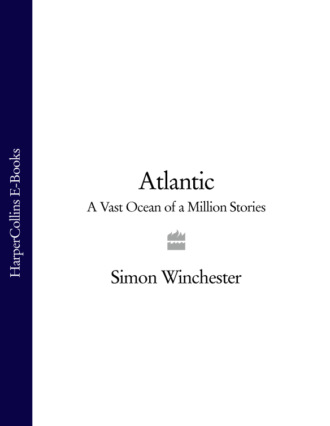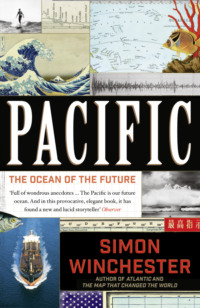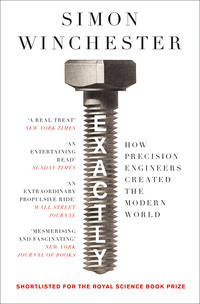
Полная версия
Atlantic: A Vast Ocean of a Million Stories
• • •
Almost half a century has passed since I made those two crossings — fifty-odd years during which I must have traversed this particular body of water five hundred times, at least. And though I have ventured out from a variety of other ports in both the North and South Atlantic, to cross in other directions, by rhumb lines or diagonally or along the lines of longitude or in huge looping curves, or to make expeditions out to the various islands that are scattered across the sea, it seems to me that the simple and most familiar route, the track from the major British ports to their major equivalents in eastern Canada or the United States, distils one aspect of what this book is about — humankind’s evolving attitude to and relationship with this enormous body of water.
And even in my lifetime, this is a relationship that has changed, and profoundly so.
In the early 1960s it was still something of a rarity to travel across the Atlantic by ship, or by any other means, for that matter. A scattering of the broke still went one-way, westbound, as migrants; a rather larger number of the wealthy and leisured travelled out and back on the great steamers with no care for time or cost. A handful of businessmen, not a few politicians, and clubby aggregations of diplomats went too, but most of them in propeller-driven aircraft rather than propeller-driven ships, for their crossings were said to be more urgent. For those who made the journey, it was still an adventure that could be daunting, exciting, memorable, suffused with romance, or cursed by the travails of mal de mer. What it most certainly was not was routine.
The same can hardly be said today. Yes, for a while it certainly was an excitement to cross the ocean by air — but for only a very short while. It must have been a considerable thrill, for instance, to take a Pan Am Clipper flying-boat service from the Solent to the Hudson, with stops in the harbours of such strange-sounding and long-forgotten coastal way stations as Foynes, Botwood, and Shediac. It must have seemed the height of style to stretch out in a bed on a double-decker Stratocruiser while the seas unrolled silently below. It was surely memorable — and foolhardy, given the plane’s dismal safety record - to fly aboard one of those first BOAC Comet services, and even in the smoky old Boeing 707s when Pan Am and TWA began to fly them non-stop. I remember well taking some of the early Concorde test flights, and being naïvely astonished at just how fast they were when, only halfway through the Arts section of the New York Times, I was told that we were decelerating over the Bristol Channel and would be in London directly and so would I return my tray table and seat to where they had been when I eased myself aboard just a few moments before. Air travel across the great ocean was for a brief time almost as romantic and memorable as travel by sea. But it all soon changed.
For me it was marked by a small semantic shift. It began some time in the 1980s, when the pilots of aircraft crossing between Heathrow and Kennedy would slip almost casually into their welcoming announcement that “our track today will take us over Iceland” — with a slight emphasis on the word today, as if yesterday the flight was much the same except that it had passed over Greenland, or the Faroes. Or else they told the passengers that “the 177” or whatever the flight number might be, and so sounding studiedly casual, would be passing “a little farther north than usual, due to strong headwinds, and we’ll make our landfall over Labrador and then head down over the state of Maine.”
It seemed to me a shame - as though the flight deck were telling its charges that there was nothing much to get excited about any more: today’s transit was much like yesterday’s, or last week’s, and the crossing of what had become called “the pond”3 (the terminology demoting the great ocean to a body of water almost without significance) would invariably be much as was generally expected at this time of year. Ho-hum, in other words.
And we passengers scarcely noticed. Having made good our nest of books and blankets, having made obligatory noises of good cheer to our stranger-neighbour, having glanced at the menu and wondered idly if it was too early to order a drink, we settled down and barely noticed a take-off that would perhaps have enthralled us twenty years before. The same was true when it came to our landing six or seven hours later. Maybe there was a little more curiosity - since home was close and one wanted to sense and maybe spot a hint of it. Generally speaking, though, whether we could see six miles beneath us the forests of Labrador or those on Anticosti Island, or whether our first solid encounter with North America was Cape Breton Island or the sand spits of Sandy Hook or Cape Cod, it made little difference: all we really cared about was that we got in on time, that the border formalities weren’t too irksome, and that we could get onto dry land and begin at once what we had journeyed to achieve. The grey-green vastness of undifferentiated ocean over which we had perforce to travel was really of no consequence whatever.
• • •
That for years was very much the case for me - until one recent summer’s afternoon, as I was crossing to New York on a British Airways 777, companionless, conversationless, and bored, pinioned uncomfortably into a starboard window seat. Lunch was long since finished. I had finished the paper and my only book. The entertainment was as much as I could bear. There were three more hours to run, and I was daydreaming. I looked idly out of the plexiglass porthole. It was quite cloudless, and miles below us was the sea, as deep blue as the sky, not smooth but vaguely crinkled, like dull aluminium foil, or pewter, or hammered steel, and seeming to inch its way slowly backwards from beneath the wing.
I had been gazing for maybe fifteen minutes at the blue sea emerging from beneath the grey flaps. Blue, blue, blue … and then as I gazed down, I fancied I saw the water surface unexpectedly and subtly change colour, becoming first rather paler, and within what can have been no more than a couple of moments, or miles, transmuting itself into a shade of light aquamarine. Seldom had I seen such a thing from this altitude: I supposed that if it was real, and not imagined, then it must have had something to do with the angle of the sun, which since I had taken a midday flight, was higher in the sky than usual.
I glanced at the sky map in the seatback in front. The chart was large-scale and poor, but the position it showed offered the obvious reason for the alteration: we had crossed the edge of the continental shelf. The deep mid-ocean abyss over which we had been passing since crossing the Porcupine Bank, which marks the western end of the European shelf and is usually reached about half an hour off the Irish coast, had now lifted itself up at last to become the faint submarine stirrings of the North American mainland.
Except that a few moments later, and even more unusually, the water became dark blue once again, though this time only for a brief interval, before lightening yet again. It was as though the aircraft had passed over a deep river in the ocean, a cleft between two high underwater plains. I squinted as far under the wing as my vision allowed: from where the plain resumed it appeared to stretch away to the west, uninterrupted. And then I remembered, from what I knew of the undersea geography of this part of the North Atlantic: I had long been fascinated by the geography of the Gulf Stream, and as I remembered, it flowed nearby. What I recalled suggested to me that the uninterrupted plain I could now see marked the beginning of the Grand Banks of Newfoundland. The dark blue underwater channel was known as Flemish Pass. And the first patch of green I had spotted was, I realised, the very place where we had stopped all those years before to rendezvous with the Canadian rescue plane: the well-remembered shallows known as the Flemish Cap.
• • •
Nearly half a century has gone by since I first saw the Flemish Cap and watched, captivated, as that Canadian Air Force plane swept in. Back then — I was still a youngster, to be sure, and more easily awed than today - I had savoured every detail of what seemed to me a fascinating small moment. And in the hours after our ship had started up and begun to move off westward, I had learned of other historical grace notes to the saga: a friendly deck officer on the Empress had told me that the emergency signals we had tapped out the night before had been picked up on Newfoundland by the American coast guard base in a place called Argentia - and they had taught us at school that it was at Argentia, back in 1941, that Winston Churchill and Franklin Roosevelt met aboard the battleship Prince of Wales and declared the Atlantic Charter, which so famously delineated the working of the post-war world. That I had just been hove-to, so far from all mankind, at the mercy of the sea - and yet linked by radio with so significant a piece of history: that made the moment even more special and helped burn the memory of this fragment of waterway ever more firmly into my mind.
Today that same piece of marine geography, spotted briefly from an overflying aircraft, had been no more than a faraway patch of mottled and discoloured water serving inconveniently to keep me from the timely arrival at my destination. How sad, I thought, that so vividly remembered a place should have so quickly transmuted itself into something little more than an incommoding parcel of distance.
But wait - was that not how the world at large had come to think of the ocean as a whole? Wasn’t the ocean just distance for most people these days? Didn’t we all now take for granted a body of water that, so relatively recently - no more than five hundred years before, at most—was viewed by mariners who had not yet dared attempt to cross it, with a mixture of awe, terror, and amazement? Had not a sea that had once seemed an impassable barrier to somewhere — to Japan? the Indies? the Spice Islands? the East? — transmuted itself with dispatch into a mere bridge of convenience to the wealth and miracles of the New World? Had our regard for this ocean not switched from the intimidation of the unknown and the frightening to the indifference with which we now greet the ordinary?
And yet had not this change taken place in some kind of inverse relation to the ocean’s ever-growing importance? For hadn’t the Atlantic become over the centuries much more than a mere bridge? It had surely also become a focal point, an axis, a fulcrum, around which the power and influence of the modern world has long been distributed. One might say that if the Mediterranean had long been the inland sea of the classical civilisation, then the Atlantic Ocean had in time replaced it by becoming the inland sea of Western civilisation. D. W. Meinig, the historical geographer, wrote in 1986 of this new perceived role of the Atlantic: the ocean, he wrote, was unique in having “the old seats of culture on the east, a great frontier for expansion on the west, and a long and integral African shore”. The Atlantic existed in equipoise between the blocs of power and cultural influence that have shaped the modern world. It is an entity that links them, unites them, and in some indescribable way also defines them.
It was Walter Lippmann, in 1917, who first advanced the notion of the Atlantic Community. In a famous essay in the New Republic, he wrote of it as the core of “the profound web of interest which joins together the western world.” And though today we recognise what this community is and whom it fully embraces (and even if we do not fully comprehend it), it is clear that despite the coming claims of India and China and Japan, it is a grouping of countries and civilisations that, for now at least, still manages to direct the principal doings of the planet.
It is a community of sorts, a kind of pan-Atlantic civilisation, if you will, that at its beginning involved simply the northern countries on the Atlantic shores, with the nations of Western Europe on the one hand and the United States and Canada on the other. More recently both Latin America and the nations of western and central Africa have been incorporated into the mix. Brazil and Botswana, Guyana and Liberia, Uruguay and Mauritania are now every bit as much in and of the Atlantic Community, just as for scores of years have been the peoples of more obviously Atlantic nations such as Iceland and Greenland, Nigeria, Portugal, Ireland, France, and Britain. The community is indeed much larger and more comprehensive than that, as what follows will explain.
And yet the body of water that ties these millions of people and myriad cultures and civilisations together - the S-shaped body of water covering 33 million square miles, which in the Western Hemisphere is called the Atlantic Ocean, and which on the eastern side of the world is generally known as the Great West Sea - suffers the fate of the overlooked. It is an ocean that can fairly be described as hidden in plain sight — something that is quite obviously there, but in so many ways is just not obvious at all.
It is undeniably very visible. “Even if we hang a satellite station in space,” wrote the American historian Leonard Outhwaite, in 1957, when the first Sputnik was launched, “or if we reach the moon, the Atlantic Ocean will still be the centre of the human world.”
• • •
Not all bodies of water are so very evidently alive as the Atlantic. Some inland seas that are large, topographically important, navigationally complex, and historically crucial manage somehow to seem strangely still, starved of any readily apparent vitality. The Black Sea, for one, has the feel of a rather moribund, lifeless body of water; the Red Sea also, bathed in its ochre fog of desert sand, seems perpetually half dead; even the Coral Sea and the Sea of Japan, beautiful and placid though they may be, are somehow stripped of any true kind of oceanic liveliness and come off as strangely dulled.
But the Atlantic Ocean is surely a living thing - furiously and demonstrably so. It is an ocean that moves, impressively and ceaselessly. It generates all kinds of noise - it is forever roaring, thundering, boiling, crashing, swelling, lapping. It is easy to imagine it trying to draw breath - perhaps not so noticeably out in mid-ocean, but where it encounters land, its waters sifting up and down a gravel beach, it mimics nearly perfectly the steady inspirations and exhalations of a living creature. It crawls with symbiotic existences, too: unimaginable quantities of monsters, minute and massive alike, churn within its depths in a kind of maritime harmony, giving to the waters a feeling of vibration, a kind of sub-oceanic pulse. And it has a psychology. It has moods: sometimes dour and sullen, on rare occasions cunning and playful; always it is pondering and powerful.
It also has a quite predictable span of life. Geologists believe that when all is done the Atlantic Ocean will have lived for a grand total of about 370 million years. It first split open and filled with water and started to achieve properly oceanic dimensions about 190 million years ago. Currently it is enjoying a sedate and rather settled middle age, growing just a little wider each year, and with a few volcanoes sputtering away in its mid-region, but generally not having to suffer any particularly trying geological convulsions. But in due course, these will come.
Before what geologists like to think is too much longer, the Atlantic will begin to change its aspect and size very dramatically. Eventually, as the continents around it shudder and slide off in different directions, it will start to change shape, its coasts (ac-cording to the currently most favoured scenario) will move inward and become welded together again, and the sea will eventually squeeze itself dry and vanish into itself. Planetary forecasters estimate this will take place in about 180 million years.
That is no mean life span. Assume for the sake of argument that the world’s total existence, from the postmolten Hadean to the cool meadows of today’s Holocene, encompasses some 4.6 billion years. Once tallied up, the Atlantic’s 370 million years of existence as a separate body of water within that world will have made up something like 8 per cent of the planet’s total life. Most other oceans that have come and gone have existed for rather shorter periods: so far as other competing claims for longevity are concerned the Atlantic will probably turn out to be one of the world’s longest-lived, a potential old-timer, a highly respectable record breaker.
It is both possible and reasonable, then, to tell the Atlantic Ocean’s story as biography. It is a living thing; it has a geological story of birth and expansion and evolution to its present middle-aged shape and size; and then it has a well-predicted end story of contraction, decay, and death. Distilled to its essence it is a rather simple tale to tell, a biography of a living entity with a definable beginning, a self-evident middle and a likely end.
But then there is very much more to the tale than that. For we cannot forget the human aspect of the story.
Humans have lived around the Atlantic’s peripheries and on its islands, and have crossed and recrossed it, plundered it and fought on it, seized it and surveyed it and despoiled it, and in doing so have made it quite central to our own evolving lives. That is a story, too - a story quite different from, and very much shorter than, that of the making and unmaking of the ocean itself, but one that is yet vastly more important to us as human beings.
Humans were not there when the ocean formed. We will not be there when it ceases to be. But for a definable period, poised almost in the midlife of the ocean itself, we humans arrived, we developed, and — or so we like to think — we promptly changed everything. Only by telling this second story, the kernel within the main shell of the first, can we recount in full the life of the Atlantic Ocean. The physical ocean’s history of opening and closing then becomes the context, the frame, for the history of humanity’s intimate involvement with and within it.
That human story began when man first settled on the Atlantic’s shores. As it happens, mankind spilled down to the sea most probably in southern Africa, and he did so quite possibly (and most fortunately for this account) very close to Africa’s southern Atlantic shores. What follows from that moment is every bit as complicated and multidimensional as one might imagine: the human story of the ocean swiftly becomes a saga of a mélange of peoples and parallels, of diverging languages and customs, of mixtures of acts and events, achievements and discoveries, of confusions and contests. It is a tricky tale to tell. Simple chronology might suit very well the story of the making of the physical sea itself - but the details of the human experience are scarcely so amenable.
For how would it be possible to knit together the experience of, say, a Liberian fisherman with that of an atomic submariner on patrol off Iceland? Or to link the life of an amethyst miner on the shores of Namibia with that of the American director of Man of Aran; to write of the captain of a British Airways Boeing and of an ice-patrol ship off the coast of South Georgia; or to connect the long-dead sea-painter Winslow Homer with a wide-eyed Guantanamo detainee from western China, swimming for the first time in the Atlantic Ocean off Bermuda? How best create a sensible structure from all this strange and multicoloured variety?
For a long time that remained a puzzle. I wanted so much to write the story of the ocean. But what and where was the structure? I was, as they say, all at sea.
Except that one day, gazing down at the rolling waters, I thought: if the ocean had a life, might not mankind’s relationship with it have some kind of a life about it also? After all, fossils and finds from digs show that this relationship had a particular moment of birth. It will have a likely moment of death, as well - even the most determined optimist will have to admit that an end to human existence is in sight, that in a few thousand, or maybe a few tens of thousands of years, humanity will be finished, and this aspect of the story will be over, too.
So yes, to corral the life of this human relationship with the sea, and place it within the context of the much more straightforward life of the ocean itself - this might indeed be possible as biography, too. But then there were the details, churning and daunting and devilish. The tide of human history was so filled with facts and incidents and characters and tones of subtle shading, that it might be near impossible to swim against it.
But in the end, and out of the blue, I was tossed a quite unexpected lifebelt - and by that most non-maritime of rescuers, William Shakespeare.
• • •
For many years I had carried with me on tedious plane journeys (and indeed had with me as we passed above the waters of Flem ish Cap that recent time) a well-thumbed copy of Seven Ages, an anthology of poetry that was assembled in the early 1990s by a former British foreign secretary, David Owen. He had arranged his chosen poems in seven discrete sections, to illustrate each of the seven stages of man’s life that are listed so famously in the “All the world’s a stage …” speech in As You Like It. And I was reading Owen’s book one day when I realised that this very same structure also happened to offer me just what I needed for this human aspect of the Atlantic story: a proper framework for the book I planned to write, a stage setting that would transmute all the themes of ocean life into players, progressing from infancy to senescence, so that all could be permitted to play their parts in turn.
The Ages are those we remember, if scantily, from childhood, and are listed in Jacques’s all too famously gloomy monologue:
At first the infant, Mewling and puking in the nurse’s arms; And then the whining school-boy, with his satchel, And shining morning face, creeping like snail Unwillingly to school. And then the lover, Sighing like furnace, with a woeful ballad Made to his mistress’ eyebrow. Then a soldier, Full of strange oaths, and bearded like the pard, Jealous in honour, sudden and quick in quarrel, Seeking the bubble reputation Even in the cannon’s mouth. And then the justice, In fair round belly with good capon lin’d, With eyes severe and beard of formal cut, Full of wise saws and modern instances; And so he plays his part. The sixth age shifts Into the lean and slipper’d pantaloon, With spectacles on nose and pouch on side; His youthful hose, well sav’d, a world too wide For his shrunk shank; and his big manly voice, Turning again toward childish treble, pipes And whistles in his sound. Last scene of all, That ends this strange eventful history, Is second childishness and mere oblivion; Sans teeth, sans eyes, sans taste, sans everything.
Infant; School-boy; Lover; Soldier; Justice; Slipper’d Pantaloon; and Second Childishness. It seemed, all of a sudden, just about the ideal. Pinioned within these seven categories, the stages of our relationship with the ocean could be made quite manageable.
I could examine in the First Age, for example, the stirrings of humankind’s initial childlike interest in the sea. In the Second, I could examine how that initial curiosity evolved into the scholarly disciplines, of exploration, education, and learning - and in this as in all the other Ages I could explore the history of that learning, so that each Age would become a chronology in and of itself. I could then become captivated in the Third Age — that of the lover- by the story of humankind’s love affairs, by way of the art, poetry, architecture, or prose that this sea has inspired over the centuries.







